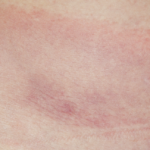On a hunch, I asked her if she’d slip off her shoes and socks. Doctors tend to ignore the feet. We rarely examine them during a physical unless we palpate for pulses or check for reflexes. But here was another clue. The third toe on the right foot was reddened and ballooned like a sausage. When I reached down and pressed on the joint, Ms. Corinth flinched.
“That’s funny that you noticed the toe. I thought I stubbed it last week. Is it the Lyme? I’ve been off the intravenous ceftriaxone for months. My insurance company is refusing to pay for further treatment, and my fatigue has come roaring back.”
Now I get it. The insurance company won’t pay for further treatment with IV antibiotics unless a second opinion confirms the original diagnosis and agrees with long-term IV antibiotics. That’s why she’s here.
Home infusions are expensive, running into thousands of dollars per month. But it’s not only the cost of treatment. IV antibiotics are not innocuous. During daily hookups, bacteria may be transferred from the skin surface into the bloodstream through improper sterile technique. A small, but significant, percentage of patients on long-term IV antibiotics become septic and require hospitalization, removal of the port and IV antibiotics to treat the new infection. That is, if they don’t die from complications of an infected heart valve or kidney failure. Which happens.
I reached up and scratched my forehead. “Let’s have you get dressed and I’ll be back in a few minutes.” I pressed on the foot pedal to lower the table.
Unlike such diseases as rheumatoid arthritis, which requires lifelong treatment, reactive arthritis associated with Lyme arthritis usually burns out, & medications can eventually be discontinued.
Persistent Symptoms
Then I walked slowly back to my office. There, I cracked open a pistachio nut and considered my strategy.
There are nearly endless permutations in Lyme consultations. Some are clear-cut, some are complex and nuanced. Nearly all are highly charged emotional encounters requiring time and patience. For example, there is the low-hanging fruit of recent unexplained solitary wrist or knee warmth and swelling in a child or adult. I examine the patient for evidence of alternative explanations for inflammatory arthritis and am relieved when Lyme testing is positive. This is a good thing, I explain to my patients. Instead of having a chronic, lifelong immune system disorder, you have an infection. It is usually cured by a single month of oral doxycycline, and if it persists, either another month of oral doxycycline or, in some resistant cases, a course of intravenous ceftriaxone.


